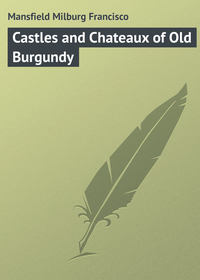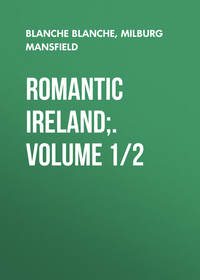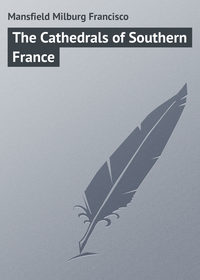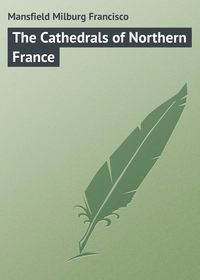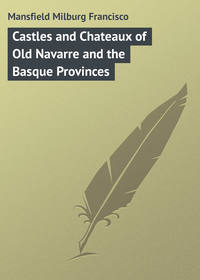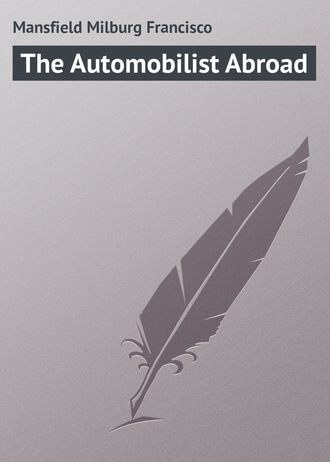 полная версия
полная версияThe Automobilist Abroad
We did all these things, indeed we had done them before, but they were ever marvellous just the same, and in the museum we were always running on Mistral himself, who, in his waning years, finds his greatest delight in arranging and rearranging the exhibits of his newly founded Musée Arletan.
The hotels of Arles are a disappointment. The Hôtel du Nord, with a portico of the old Forum built into its walls, and the Hôtel du Forum, on the Place du Forum, are well enough in their way, – they are certainly well conducted, – but they lack "atmosphere," and instead of the cuisine du pays, you get ham and eggs and bifteck served to you. This is wrong and bad business, if the otherwise capable proprietors only knew it.
One does better in the environs. At St. Rémy, at the Grand Hôtel de Provence, you will get quite another sort of fare: hors d'œuvres of a peculiarly pungent variety, not forgetting the dark purple, over-ripe olives, a ragoût en casserole, a filet d'agneau with a sauce Provençale, and a poulet and a salad which will make one dream of the all but lost art of Brillat-Savarin. They are good cooks, the chefs of Provence, of the small cities and large towns like St. Rémy, Cavaillon, Salon, and Carpentras, but everybody will not like their liberal douches of oil any more than they will the penetrating garlic flavour in everything.
We took a turn backward on our route from Arles and went to Les Baux, the now dismal ruin of a once proud feudal city whose seigneurs held sway over some sixty cities of Provence.
To-day it is a Pompeii, except it is a hill town worthy to rank with those picturesque peaks of Italy and Dalmatia. Its château walls have crumbled, but its subterranean galleries, cut three stories down into the rock itself, are much as they always were. Everywhere are grim, doleful evidences of a glory that is past and a population that is dead or moved away. The sixteen thousand souls of mediæval times have shrunk to something like two hundred to-day – most of them shepherds, apparently, and the others picture post-card sellers.
It is a very satisfactory little mountain climb from the surrounding plain up to the little plateau just below the peak at Les Baux, though the entire distance from Arles is scarcely more than fifteen kilometres, and the actual climb hardly more than four. The razor-back mountain chain, upon one peak of which Les Baux sits, is known as the Alpilles.
All of the immediate neighbourhood (scarce a dozen kilometres from where the beaten track passes through Arles) is a veritable museum of relics of the glory of the heroic age. Caius Marius entrenched himself within these walls of rock and two thousand years ago planted the foundations of the Mausoleum and Arc de Triomphe which are the pride of the inhabitant of St. Rémy and the marvel of what few strangers ever come. They are veritable antiques – "Les Antiquités," as the people of St. Rémy familiarly call them, and rise to-day as monuments of the past, gilded by the Southern sun and framed with all the brilliancy of a Provençal landscape.
We slept at St. Rémy, and made the next morning for Tarascon, with memories of Dumas and Daudet and Tartarin and the Tarasque pushing us on.
Tarascon has a real appeal for the stranger; at every step he will picture the locale of Daudet's whimsical tale, and will well understand how it was that the prisoners' view from the narrow-barred window of the Château at Tarascon was so limited.
There is a fine group of Renaissance architectural monuments at Tarascon, and a street of arcaded house-fronts which will make the artist of the party want to settle down to work.
Across the river is Beaucaire, famous for its great fair of ages past, the greatest trading fair of mediæval times, when merchants and their goods came from Persia, India, and Turkey, and all corners of the earth. The Château of Beaucaire is a fine ruin, but no more; it is not worth the climbing of the height to examine it.
A little farther on is Bellegarde, where Dumas placed Caderousse's little inn, the unworthy Caderousse and his still more unworthy wife, who finished the career of Edmond Dantès while he was masquerading as the Abbé. There is no inn here to-day which can be identified as that of the romance, but Dumas's description of its sun-burnt surroundings, the canal, the scanty herbage, and the white, parched roadway, is much the same as what one sees today, and there is a tiny auberge beside the canal, which might satisfy the imaginative.
Avignon, the city of the seven French popes, who reigned seventy years, was the next stopping-place on our itinerary.
We put up at the Hôtel Crillon and fared much as one fares in any provincial large town. We were served with imitation Parisian repasts, and were asked if we would like to read the London Times. Why the London Times no one knew: why not the New Orleans Picayune and be done with it?
We did not want to do anything of the sort, we merely wanted to "do" the town, to see the tomb of Pope Jean XXII. in the cathedral, to walk, if possible, upon the part left standing of St. Benezet's old Pont d'Avignon, a memory which was burned into our minds since our schooldays, when we played and sang the French version of "London Bridge is falling down" – "Sur le pont d'Avignon."
The greatest monument of all is the magnificent Palais des Papes, its crenelated walls and battlements vying with the city walls and ramparts as a splendid example of mediæval architecture. We saw all these things and the museum with its excellent collections, and the library of thirty thousand volumes and four thousand manuscripts.
One thing we nearly missed was Villeneuve-les-Avignon, a ruined wall-circled town on the opposite bank of the Rhône. Its machicolated crests glistened in the brilliant Southern sunlight like an exotic of the Saharan country. It is quite the most foreign and African-looking jumble of architectural forms to be seen in France. It took us three hours to cross the river and stroll about its debris-encumbered streets and get back again and start on our way northward, but it was worth the time and trouble.
From St. Rémy to Orange, perhaps sixty kilometres, was not a long daily run by any means, and we would not have stopped at Orange for the night except that it was imperative that we should see the fine antique theatre, the most magnificent, the largest, and the best preserved of all existing Roman theatres.
We saw it, and seeing it wondered, though, when one tries to project the mind back into the past and picture the scenes which once went on upon its boards, the task were seemingly impossible.
The Roman Arc de Triomphe, too, at Orange, which spans the roadway to the North – the same great natural road which all its length froth Paris to Antibes is known as the Route d'Italie – is a monument more splendid, as to its preservation, than anything of the kind outside Italy itself.
There is ample and excellent accommodation for the automobilist at Orange, at the Hôtel des Princes, which sounds good and is good. They have even a writing-room in the hotel, a silly, stuffy little room which no one with any sense ever enters. One simply follows a well-fed commis-voyageur to the nearest popular café and writes his letters there, as a well-habituated traveller should do.
Once on the road again we passed Montelimar – "le pays du nougât et de M. l'ex-President Loubet," we were told by the octroi official who held us up at the barrier of this self-sufficient, dead-and-alive, pompous little town. We didn't know M. Loubet and we didn't like nougât, so we did not stop, but pushed on for Tournon. There, at the little Hôtel de la Poste, beneath the donjon tower of the old château, we ate the most marvellously concocted déjeuner we had struck for a long time. There's no use describing it; it won't be the same the next time; though no doubt it will be as excellent. It cost but two francs fifty centimes, including vin du St. Peray, the rich red wine of the Rhône, a rival to the wines of Burgundy.
We might have done a good deal worse had we stopped at progressive, up-to-date Valence, where automobile tourists usually do stop, but we took the offering of the small town instead of the large one, and found it, as usual, very good.
We had passed La Voute-sur-Rhône, that classic height which has been pictured many times in old books of travel. It, and Tournon, and Valence, and Viviers, and Pont St. Esprit were once riverside stations for the coches d'eau which did a sort of omnibus service with passengers on the Rhône, between Lyons and Avignon. There is a steamboat service to-day which also carries passengers, but it is not to be recommended if one has the means of getting about by road.
This town, too, and Valence, were directly on the route of the malle-poste from Lyons to Marseilles. The different postes or relays were marked on the maps of the day by little twisted hunting-horns. For the most part an old-time route map of the great trunk lines of the malle-poste and the messageries would, serve the automobilist of to-day equally as well as a modern road map.
The malle-poste, and the hiring out of post-horses, in France was an institution more highly developed than elsewhere.
Post-horses were only delivered one in France upon the presentation of a passport and payment, in advance, according to the following tariff. The price was fixed by law, being the same throughout all France.

The postilion usually got one franc fifty per poste, but could only demand seventy-five centimes.
Certain carriages (chaises and cabriolets) would carry only portmanteaux (vaches), but voitures fermées, calèches, and the like might carry also a trunk (malle).
As one goes north, sunburnt Provence, its olive groves and its oil and garlic-seasoned viands are left behind, until little by little one draws upon the Burgundian opulence of the Côte d'Or, a land where the native's manner of eating and drinking makes a full life and a merry one.
We were not there yet; we had many kilometres yet to go, always by the banks of the Rhône until Lyons was reached.
Near Givors, at eight o'clock at night, within twenty kilometres of Lyons, the motor gave a weak asthmatic gasp, and stopped short. Like the foolish virgins, we had no oil in our lamps, and dusk had already fallen, and no amount of coaxing after the habitual manner would induce the thing to move a yard.
There was nothing for it but to get out the tow-ropes and wait – for a remorqueur, as the French call any four-footed beast strong enough to tow an automobile at the end of a line. (They also call a tug-boat the same thing, but as an automobile is not an amphibious animal it was a land remorqueur that we awaited.)
We did not get to Lyons that night. There are always uncalled for "possibilities" rising up in automobiling that will upset the best thought-out schedule. This was one of them.
What had happened to the machine no one yet really knows, but we had to be ignominiously towed, to the great amusement of the natives, at the end of a long rope by the power of a diminutive donkey which finally came along. The beast did not look as though he could draw a perambulator, but he buckled down to it with a will, and brought us safely through the half-kilometre or so of crooked streets which led to the centre of Givors.
Finally, we, or the car rather, was pushed into an old wash-house, once a part of an ancient château, the remise of the hotel itself, a dependance of the château of other days, having been preempted by an itinerant magic-lantern exhibittion ("La Cinémetographe Americaine," it was called on the bills), which proposed to show the good people of Givors – "for one night only, and at ten sous each" – moving pictures of Coney Island, Buffalo Bill's Wild West, Niagara Falls, New York's "Flat Iron" building, and other exotics from the New World.
We dined and slept well at Givors in spite of our accident, and were "up bright and early," as Pepys might have said (Londoners to-day do not get up bright and early, however!), to find out, if possible, what was the matter with the digestive apparatus of the automobile. Nothing was the matter! The human, obstinate thing started off at the first trial, and probably would have done the same thing last night had we given the starting-crank one more turn. Such is automobiling!
We made our entrance into Lyons en pleine vitesse, stopping not until we got to the centre of the city. The octroi regulations had just been revised, and the gates were open to passing traffic without the obligation of having to declare one's possessions. Progressive Lyons!
Lyons is truly progressive. It is beautifully laid out and kept. It is nothing like as filthy as a large city usually is, on the outskirts, and its island faubourg, between the Saône and the Rhône, is the ideal of a well-organized and planned centre of affairs.
Lyons has, moreover, two up-to-date hotels, the very latest things, one might say, in the hotel line: the Terminus Hotel, which well serves travelers by rail, and the Hôtel de l'Univers et de l'Automobilisme – rather a clumsy name, but that of a good, well-meaning hotel. Its progressiveness consists in having abolished the pourboire. You have ten per cent. added on to your bill, however. This looks large when it comes to figures, – paying something for nothing, – but at least one knows where he stands, and he fears no black looks from chambermaid or boots. The thing is announced, by a little placard placed in every room, as an "innovation." It remains to be seen if it will prove successful.
From Lyons to Dijon, 197 kilometres between breakfast and lunch, was not bad. Now, at last, we were in that opulent land of good living and good drinking, where the food and wine are alike both rich.
He's a contented, fat, sleek-looking type, the native son of the Côte d'Or, and he looks with contempt on the cider-nourished Norman and Breton, and does not for a moment think that cognac is to be compared with the eau de vie de marc of his own vineyards.
The Côte d'Or is the richest wine-growing region of all the world. Every direction-post and sign-board is like a review of the names on a wine card, – Beaune, Chambertin, St. Georges, Clos Vougeot, – and of these the Clos Vougeot wines are the most renowned.
A line drawn across France, just north of the confines of ancient Burgundy, divides the region of the vins ordinaires– the light wines of the tables d'hote– and that of those vintages which have no price. This, at least, is the way the native puts it, and to some extent the simile is correct enough.
The Côte begins and the plain ends; the hillsides rise and the river-bottoms dwindle away in the distance: such is the feeling that one experiences as he climbs these vine-clad slopes from either the Rhône, the Loire, or the Seine valleys, and here it is that the imaginary line is drawn between the vins ordinaires and the vins sans prix.
Since there is no possibility of increasing the quantity of these rich, red Burgundian wines, the highly cultured area being of but small extent, and because their quality depends upon the peculiar nature of the soil of this restricted tract, there is no question but that the monopoly of Burgundian wines will remain for ever with the gold coast of France, whatever Australian and Californian patriots may claim for their own imitations.
The phylloxera here, as elsewhere in France, caused a setback to the commerce in wines, as serious in money figures as the losses sustained during the Franco-Prussian War, but the time has now passed and the famous Côte d'Or has once more attained its time-honoured opulence and prosperity.
"Le vin de BourgogneMet la bonne humeurAu cœur."Still northward, across the plateau of Langres, we set a roundabout course for Paris. There is one great pleasure about automobiling that is considerably curtailed if one sets out to follow precisely a preconceived itinerary, and for that reason we were, in a measure, going where fancy willed.
We might have turned westward, via Moulins, Nevers, and Montargis, from Lyons, and followed the old coaching road into Paris, entering by the same gateway through which we set out, but we had heard of the charms of the valley of the Marne, and we wanted to see them for ourselves.
Our first acquaintance with it was at Bar le Duc, which is not on the Marne at all, but on a little confluent some twenty or thirty miles from its junction.
For a day we had been riding over corkscrew roads with little peace and comfort for the driver, and considerable hard work for the motor. The hills were numerous, but the surface was good and the scenery delightful, so, since most of us require variety as a component of our daily lives, we were getting what we wanted and no one complained.
It was easy going by Château Thierry and the episcopal city of Meaux, retracing almost the itinerary of the fleeing Louis XVI., and, as we entered Paris by the Porte de Vincennes, – always by villainous roadways, this getting in and out of Paris, – we red-inked another twelve hundred kilometre stretch of roadway on our record map of France.
Chapter V
By Seine And Oise – A Cruise In A Canot-Automobile
If automobiling on land in France is a pleasure, a voyage up a picturesque and historic French river in a canot-automobile is a dream, so at least we thought, four of us – and a boy to clean the engine, run errands, and to climb overboard and push us off when we got stuck in the mud.
Our "home port" was Les Andelys on the Seine, and we meet in the courtyard of the Hôtel Bellevue at five o'clock one misty, gray September morning for a fortnight's voyage up the Oise, which joins the Seine midway between Les Andelys and Paris.
There is nothing mysterious about an automobile boat any more than there is about the land automobile. It has its moods and vagaries, its good points and some bad ones. It is not as speedy as an automobile on shore, but it is more comfortable, a great deal more fun to steer, and less dangerous, and there is an utter absence of those chief causes of trouble to the automobile, punctures and what not happening to your tires. Then again there is, generally speaking, no crowd of traffic to run you into danger, and there is an absence of dust, to make up for which, when you are lying by waiting to go through a lock, you have mosquitoes of a fierce bloodthirsty kind which even the smoke from the vile tobacco of French cigarettes will not keep at a distance.
Our facile little automobile boat was called the "Cà et Là." Rightly enough named it was, too. The French give singularly pert and appropriate names to their boats. "Va t'on," "Quand même," and "Cà et Là" certainly tell the stories of their missions in their very names.
The boat itself, and its motor, too, was purely a French production, and, though of modest force and dimensions, would do its dozen miles an hour all day long.
We got away from the landing-stage of the Touring Club de France at Les Andelys in good time, our provisions, our gasoline and oil, our river charts, our wraps and ourselves all stowed comfortably away in the eight metres of length of our little boat. Our siren gave a hoot which startled the rooks circling about the donjon walls of Château Gaillard over our heads, and we passed under the brick arches of the bridge for a twelve-mile run to the first lock at Courcelles.
The process of going through a river lock in France is not far different from the same process elsewhere, except that the all-powerful Touring Club de France has secured precedence for all pleasure boats over any other waiting craft. It really costs nothing, but you give a franc to the éclusier, and the way is thereby made the easier for the next arrival. The objection to river-locks is their frequency in some parts. There is one stretch of thirty or forty kilometres on the Marne with thirty-three locks. That costs something, truly.
We knew the Seine valley intimately, by road along both its banks, at any rate, and we were hopeful of reaching Triel that night, near the junction of the Seine and Oise.
We passed our first lock at Courcelles, just before seven o'clock, and had a good stretch of straight water ahead of us before Vernon was reached.
You cannot miss your way, of course, when travelling by river, but you can be at a considerable loss to know how far you have come since your last stopping-place, or rather you would be if the French government had not placed little white kilometre stones all along the banks of the "navigable" and "flottable" rivers, as they have along the great national roads on land. Blessed be the paternal French government; the traveller in la belle France has much for which to be grateful to it: its excellent roadways, its sign-boards, and its kilometre stones most of all. The motor-boat is highly developed in France from the simple fact that you can tour on it. You can go all over France by a magnificent system of inland waterways; from the Seine to the Marne; from the Oise to the Sambre – and so to Antwerp and Ghent; from the Loire to the Rhône; and even from the Marne to the Rhine; and from the Mediterranean to the Atlantic. France is the touring-ground par excellence for the automobile boat.
Here's a new project of travel for those who want to do what others have not done to any great extent. Africa and the Antartic continent have been explored, and the North Pole bids fair to be discovered by means of a flying-machine ere long, so, with no new worlds to conquer, one might do worse in the way of pleasurable travel than to explore the waterways of France.
Maistre wrote his "Voyage Autour de Ma Chambre" and Karr his "Voyage Autour de Mon Jardin," hence any one who really wants to do something similar might well make the tour of the Ile de France by water. It can be done, and would be a revelation of novelty, if one would do it and write it down.
For the moment we were bound up the Oise; we had passed Vernon and Giverny, sitting snug on the hillside by the mouth of the Ept, where we knew there were countless Americans, artists and others, sitting in Gaston's garden or playing tennis on a sunburnt field beside the road. Foolish business that, with a river like the Seine so near at hand, and because it was the custom at Giverny, a custom grown to be a habit, which is worse, we liked not the place, in spite of its other undeniable charms.
We put in for lunch at La Roche-Guyon, a trim little town lying close beneath the Renaissance château of the La Rochefoucauld's. There are two waterside hotels at La Roche-Guyon, beside the ugly wire-rope bridge, but we knew them of old, and knew they were likely to be full of an unspeakable class of Parisian merrymakers. There may be others who patronize these delightfully situated riverside inns, but the former predominate in the season. Out of season it may be quite different.
We hunted out a little café in the town, whose patron we knew, and prevailed upon his good wife to give us our lunch en famille, which she did and did well.
It was très bourgeois, but that was what we wanted, and, after a couple of hours eating and lolling about and playing with the cats and talking to the parrot, – a Martinique parrot who knew some English, – we took to the river again, and, after passing the locks at Bonnières, arrived at Mantes at five o'clock.
The nights draw in quickly, even in the early days of September, and we were bound to push on, if we were to reach Triel that night. We could have reached it, but were delayed at a lock, while it emptied itself and half a score of downriver barges, and, spying a gem of a riverside restaurant at Meulan, overhanging the very water itself, and hung with great golden orange globes of light (so-called Japanese lanterns, and nothing more), we were sentimentally enough inclined to want to dine with such Claude Melnotte accessories. This we did, and hunted up lodgings in the town for the night, vowing to get an extra early start in the morning to make up for lost time.






